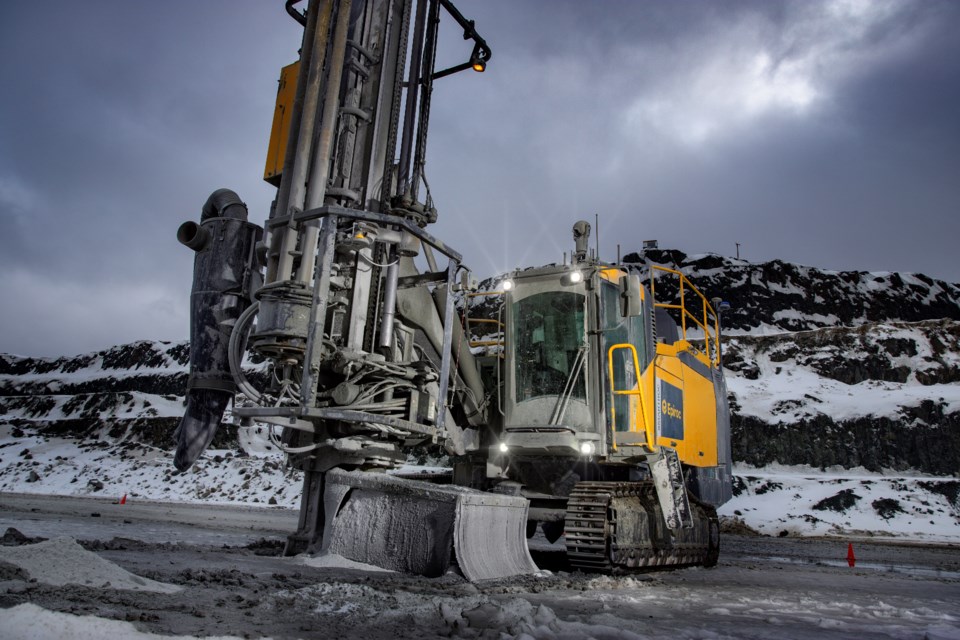The Newmont (formerly Goldcorp) Hollinger open pit mine in the heart of Timmins, Ontario has broken new ground in more ways than one.
It’s where Newmont has partnered with Epiroc to set up the world’s first fully autonomous SmartROC D65 surface drilling rig for production at the pit. The story is one of many case studies documented in a new 207-page mining reference manual produced by Epiroc as the definitive reference for drilling in surface mining, quarrying and construction.
Epiroc calls it the “go-to guide for knowledge about surface drill rigs, the applications they work in, geology, automation, rock drilling principles and much more.”
The Hollinger pit which has been in operation for roughly six years now came about because the company which was in the process of preparing a closure plan for the historic Hollinger underground gold mine had discovered significant gold mineralization throughout the old mine workings as part of a due diligence exercise. The company decided it could not write off the old mine without first recovering the significant quantity of leftover gold.
It was also partly as the result of the City of Timmins adopting a new official plan that allowed for active surface mining in the built up urban area of the city, in some cases within 100 metres of homes, stores and businesses.
In Canada’s early gold mining history, the Hollinger Mine was known as one of the Big Three gold producers along with the Dome Mine and the McIntyre Mine, all located in Timmins. Mining began in 1910. The company shut down the underground operations in the late 1960s as the price of gold and economic conditions were such that the operation was no longer feasible.
In the mid-2000s Goldcorp, which had acquired all the big legacy mines in Timmins, was planning to initiate a closure plan at the Hollinger. The mine had been fenced off because of numerous subsidences and open holes. The entire Hollinger property was regarded as a safety hazard and an eyesore. That all changed when the new mineralization was discovered. The company decided that recovering the gold with an open pit would also allow for the mine closure plan to continue and to eventually include a large spring-fed lake and a public park.
And so it was in February 2014 that the first blast occurred to initiate the new pit. Over time, work at the pit has been stepped up with increased drilling, blasting, mucking and ore-haulage to the Dome Mine milling complex.
The introduction of the autonomous drills was regarded not only as a safety measure by removing the drill operators from the pit, but also as an efficiency measure since the drills can run longer, have less down time, drill more holes per shift and there is less wear and tear on drilling tools, said Epiroc.
There are two autonomous drills in the Hollinger pit. They do require human monitoring said Epiroc, but the drillers do not have to go into the pit. Instead they go to an office at the Dome Mine several kilometres away. There they can upload a drill pattern each day. The drill rigs do the rest; drilling the holes, changing out the drill rods and then positioning the drills to the next hole in the pattern.
Epiroc quoted Newmont fleet management coordinator Shahn Cybulski who supports the project and said his primary concern was improved safety. He added that it also means a higher level of production.
He said Epiroc and Newmont joined the partnership for the same reasons.
“Both companies strive to be at the forefront of innovation and development in the rock drilling industry. We currently have two SmartROC D65 autonomous drill rigs running in the Hollinger open pit and to date I have yet to see any downside to this project,” said Cybulski.
Epiroc has branch offices throughout Northern Ontario including Sudbury, Timmins, North Bay, Red Lake and Marathon.
- Northern Ontario Business
